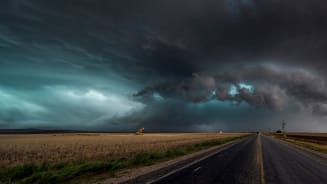Understanding the North American Wildfire Landscape
North America has now experienced at least one +$1 billion wildfire loss event in eight of the last 10 years. Prior
to that, this magnitude of loss occurred in only five out of the previous 50 years.
While the 2023 U.S. wildfire season was less extensive than past years (2.6 million acres burned compared to the
decadal annual average of 7 million acres), it tragically marked the deadliest year in the last century with the
Lahaina Fire causing over 100 deaths.
The rise in wildfire severity and size seen in recent years in the western U.S. is directly linked to climate change,
with increases in fuel aridity (the drying out of trees and other flammable ecosystems) driving exponential
increases in burn area . A warming climate increases the atmosphere’s demand for water. This, coupled with changing
rainfall patterns contributes to drier and more flammable fuels, creating more favorable underlying conditions for
ignition and spread.
Wildfire risk is especially high when dry fuels are combined with strong winds, spreading flames rapidly and making
the fire difficult to control. The Camp (2018), Marshall (2021), and Lahaina (2023) fires were all influenced by
very strong winds, which spread the fires from wildland sources into suburban communities, where they spread from
structure to structure.
In collaboration with UCLA and UC Merced, Aon produced high resolution climate data to integrate into its Climate
Risk Monitor tool, helping to quantify how wildfire and other climate perils may change in the future. The Canadian
Forest Fire Weather Index (FWI) is a useful metric to estimate the role of changing weather and climate conditions
on potential fire danger. Many of the most costly and deadly events in recent U.S. history have occurred under
extreme FWI conditions.
Below shows the projected increase in days per year with extreme fire weather (FWI >50) in year 2050 under a
moderate SSP2-4.5 emissions scenario, roughly equivalent to a 2.0°C global warming signal. The change is calculated
in reference to a historical baseline period of 1995-2014. Western Texas, the front range of the Rockies, and parts
of the interior West show significant increases in the frequency of extreme fire weather conditions in the future
due to climate change.
Projected Change in Extreme Fire Weather Days in 2050























































































































































